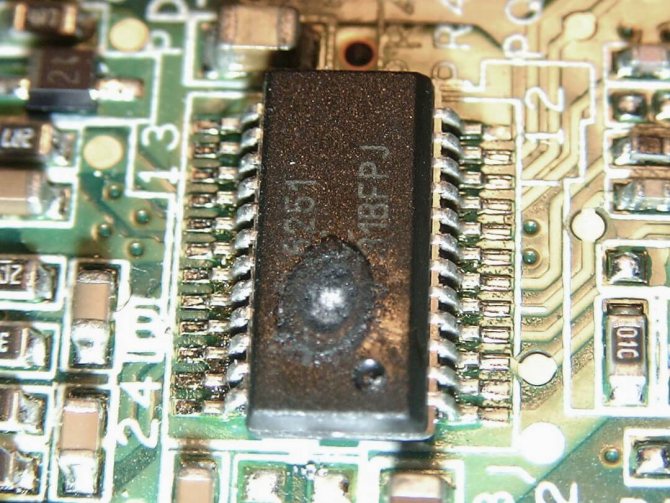Basic concepts of piecework-progressive payment
Under the piecework system, wage calculations are carried out for the amount of work performed (products made) at established prices per unit of product (service) and do not depend on the time spent working. Wages self-discipline workers and do not give them the opportunity to slack and stall for time.
The piece-progressive system (PPS) provides additional incentives for the production of products (services) in excess of the established daily (shift) standard: increased piece rates are applied.
It is possible to use a differentiated price growth scale depending on the increase in production. For example:
- when the norm is exceeded by up to 30%, an increasing factor of 0.2 is used
- from 30 to 50% – 0.4
- over 50% – 0.6
A characteristic feature of the ATP is that the growth rate of wages exceeds the rate of production, so its constant use can lead to additional losses. Most often it is used in cases where a significant increase in finished products is required. Typically, the increased price for excess products is limited to a maximum of double the amount compared to the basic piece rate.
Indirect piecework wage system
The indirect piecework system is used, as a rule, to pay workers in service and auxiliary industries. In this case, their earnings depend on the salaries of workers in the main production who receive piecework.
The wages of service workers are set as a percentage of the wages of workers in the production they serve.
This makes it possible, for example, to interest equipment adjusters and repairers in its reliable operation, since as a result more products will be produced on this equipment. EXAMPLE
Petrov, an employee of the auxiliary production of JSC Aktiv, was given indirect piecework wages. Petrov receives 3% of the earnings of workers in the main production. In November, workers in the main production received a salary in the amount of 258,000 rubles. Therefore, for November Petrov will receive: 258,000 rubles. × 3% = 7740 rub.
For what professions is it used?
The system is used for workers performing standard operations in large continuous shop processes:
- turners, tool makers
- assemblers of components, parts
- in furniture production
- harvesting in agriculture (combine operators, workers harvesting vegetables, potatoes)
- manufacturers of clothing, footwear, household goods
- in the field of personal services (hairdressers, laundries)
It is ineffective to use ATP for employees performing various functions that depend on external factors in their work - the pace of sales of finished products, technical malfunctions of equipment, irregular supply of consumables.
When is a system effective?
The standard rule for economic incentives is the ratio of wage growth to production growth of 0.8. Therefore, the piece-progressive system is usually used when accelerated production of popular products and services in high demand is required. In this case, the increase in wages is more than offset by additional funds received from the sale of goods and services. In other cases, the system may lead to an increase in the cost of products and a loss of competitiveness. To achieve an economic effect from maintaining an ATP, it is necessary:
- ensuring clear shift control over the production of quantity and quality of products
- correct calculation of the standard piece rate, the rate of increase in excess coefficients
- minimizing factors that negatively affect the performance of work (interruptions in the supply of materials, equipment malfunction)
- achieve timely sales of finished products and the influx of additional financial resources from increased sales of finished products
In agriculture, SPS is used due to short deadlines for harvesting crop products.
Important! It makes sense to initially introduce a piece-rate progressive system for a short period of time - 1-2 months. After this, make adjustments to the progress rates or switch to other methods of remuneration.
Pros and cons of the payment system
The main advantages and disadvantages of using a piece-rate progressive payroll system are shown in Table 1.

| № | Feature name | plus/minus |
| 1 | Growth in production of goods and services | + |
| 2 | Acceleration of turnover of goods and cash flows | + |
| 3 | Encouraging employees to use their working time effectively | + |
| 4 | Increase in the cost of products and work performed due to an increase in the wage fund for mandatory social contributions | – |
| 5 | Calculation complexity when using several coefficients | – |
| 6 | Increased likelihood of abuse in the production of products (transfer of part of the production from one shift to another) | – |
| 7 | The employee’s dependence on factors beyond his control – lack of raw materials, spare parts, equipment breakdown | – |
| 8 | Disruption of the general production rhythm due to the desire of workers to receive additional income for a longer work shift | – |
| 9 | Employee motivation is lost in the long term | – |
| 10 | The danger for an employee of revising the basic norm after a stable period of exceeding the plan | – |
Video review of salary calculation using various methods:
Important! Before introducing ATP for remuneration in each individual case, it is necessary to accurately calculate the result of all positive and negative factors so that changes in the method of calculating remuneration are mutually beneficial to employees and the enterprise.
Time system
As a rule, a time-based wage system is established for employees:
- who do not produce material assets (for example, an accountant, a secretary);
- whose output does not depend on personal skills (for example, an employee working on an assembly line).
The time-based remuneration system can be simple or time-based bonuses.
Payroll calculation under a simple time-based wage system depends on the type of rate or salary assigned to the employee.
An employee can set:
– hourly rate;
– daily rate;
– monthly salary.
If an employee has an hourly rate, pay him for the number of hours he works using the following formula:
| Salary = Number of hours worked × Hourly rate |
If an employee has a daily rate, pay for the days he works using the following formula:
| Salary = Number of days worked × Daily rate |
If an employee has a monthly salary, his salary does not depend on the number of working days that fall in a particular month according to the schedule. Always pay an employee who has worked all days of the month in the amount of the monthly salary.
An example of salary calculation with a simple time-based wage system
Alfa CJSC has established a time-based wage system.
To the organization's storekeeper P.A. Bespalov is paid an hourly rate. Rate per hour – 93.75 rubles. Manager A.S. Kondratyev’s salary is calculated at the daily rate - 750 rubles. Salary of secretary E.V. Ivanova – 15,000 rubles. per month.
There were 22 working days in October. The working day is 8 hours. All employees worked for a full month.
Bespalov’s salary was: 93.75 rubles/hour × 22 days. × 8 hours = 16,500 rub.
Kondratyev’s salary was: 750 rubles. × 22 days = 16,500 rub.
Ivanova’s salary was 15,000 rubles.
When using a time-based bonus wage system, wages must be calculated in the same order as with a simple time-based system. However, in addition to the salary, the employee will need to receive a bonus.
The size of the bonus can be set as a fixed amount or as a percentage of the rate (salary). The bonus is paid if the employee fulfills (or exceeds) the production task.
An example of salary calculation for a time-bonus wage system. The employee met the established bonus targets
OJSC “Proizvodstvennaya” has established a time-based bonus system of remuneration. The Regulations on Bonuses state that for producing products without defects, employees are entitled to a bonus in the amount of 10 percent of the monthly salary.
Monthly salary of worker A.I. Ivanova – 15,000 rubles. For a month he did not release a single defective part. At the end of the month, Ivanov was paid a bonus.
His total salary for the month was: 15,000 rubles. + 15,000 rub. × 10% = 16,500 rub.
If an employee who has a monthly salary has not worked the entire month, calculate his salary using the formula:
| Wage | = | Employee salary | : | Number of working days in a month | × | Number of days worked |
An example of salary calculation with a simple time-based wage system. The employee did not work fully for a month
OJSC “Proizvodstvennaya” has established a time-based wage system. Monthly salary of worker A.I. Ivanova – 15,000 rubles. From September 30 to October 27, Ivanov was on vacation. In October he worked 3 working days.
There are a total of 22 working days in October.
The accountant calculated Ivanov’s salary for October as follows: 15,000 rubles. : 22 days × 3 days = 2045.45 rub.
To calculate the salary of an employee whose pay is increased during the month (for example, official salary), use the formula:
| Monthly salary | = | Salary for part of the month before the salary increase | + | Salary for part of the month after salary increase |
Calculate the salary for the part of the month before or after the salary increase using the formula:
| Salary for part of the month before (or after) the salary increase | = | Employee salary before (or after) increase | : | Number of working days in a month | × | Number of days worked before (or after) salary increase |
An example of salary calculation with a simple time-based wage system. Within a month, the employee's salary was increased
Worker of OJSC “Proizvodstvennaya” A.I. Ivanov has a monthly salary of 15,000 rubles. From October 15, his salary was increased to 20,000 rubles. per month.
In October - 22 working days. Of these: – the period from October 1 to October 14 accounts for 10 working days; – the period from October 15 to October 31 is 12 working days.
The accountant calculated the salary separately for each of these periods.
For the period from October 1 to October 14 (taking into account the previous official salary), the accountant accrued to Ivanov: 15,000 rubles. : 22 days × 10 days = 6818.18 rub.
For the period from October 15 to October 31 (taking into account the new official salary), the accountant accrued to Ivanov: 20,000 rubles. : 22 days × 12 days = 10,909.09 rub.
Ivanov’s salary for October was: 6818.18 rubles. + 10,909.09 rub. = 17,727.27 rub.
Salary calculation
The calculation uses an integrated approach.
At the first stage, the usual piecework part of the salary is calculated using the established general price per unit.
If the shift norm is exceeded, an additional calculation of bonuses is made for exceeding the plan.
For the calculation, special tables can be used, which clearly describe the conditions for a gradual increase in prices for the production of excess products (Table 2).

| Name of product | Standard price for 1 piece, rub. | Price for the first 10 pieces above the norm, rub. per piece | Price for the next 20 pieces above the norm |
| Blouse type A | 100 | 130 | 150 |
| Blouse type B | 120 | 140 | 160 |
| Shirt | 80 | 100 | 120 |
Important! In order for the ATP to fulfill its main stimulating function, it is necessary that the calculations are accessible, understandable to employees, and their results are strictly observed in the practice of paying wages.
Video with examples of piecework calculations:
Calculation formulas
Standard formula:
Z sd-prog = (Z sd + Z sd x (P fact – P plan) / P fact) x K prog, where:
- Z sd – salary at piece rate
- P actual - actual number of products completed (services provided)
- P plan - established shift norm
- K prog - established rate progression coefficients when the shift norm is exceeded

A similar calculation formula looks like this:
Zp = Vol. norm x P norm + Vol. supernorm x P supernorm, where
- About. norm - replacement standard
- P norm - piece rate within the norm
- About. excess – volume actually completed above the norm
- P above the norm – price for volume above the norm
Important! When using one formula or another, it is necessary to make salary calculation clearer and simpler for the accountant of the payroll department and for the workers.
Types and methods of counting
There are several methods (formulas) for calculating wages in organizations that use POTS.
The simplest method is suitable for calculations for small production volumes in companies using a single-stage system:
Z total. = Z psr + Z psr * K, where
Z total. – total salary amount, Z psr. – salary accrued at direct piece rates, K – increased payment coefficient.
The following formula was also created primarily for calculating earnings using a one-step approach to salary calculation:
Z total. = N total * K + N increase. * K1, where
Z total. – total salary, N total. – the general norm of production of goods (performance of work, provision of services), K – coefficient to the general norm of production, N increased. – increased labor standard, K1 – coefficient for the increased volume of work.
This method of calculating earnings is suitable for both two-stage and multi-stage wage systems:
Z total. = Z1 + Z2 + Z3 + Z..., where
Z total. – the total amount of salary, Z1 – an increased rate if the production rate of the first stage is exceeded, Z2 + Z3 + Z... – an increased rate for the production rate of the second, third and subsequent stages.
You can also use a more complex, but effective method in calculations, implemented mainly in enterprises engaged in the production of large volumes of the same type of goods (in factories, factories):
Z total. = Z sd. * (1 + ((N fact. - N min.) / N fact.) * K), where
Z total. – total salary, 3 days. – salary at minimum rates, N fact. – actual work performed, N min. – minimum production standards taken as a basis, K – increased price coefficient.
Calculation examples
Example 1. Assembler Petrov works at a piece rate of 50 rubles per 1 assembled product unit. Replacement rate is 30 knots. When the shift norm is exceeded by up to 10%, a progressive coefficient is set at 0.25, over 10% - 0.5. In fact, Petrov made 38 knots in one shift.
His daily earnings will be:
- At the piece rate 38 x 50 = 1,900 rubles.
- For exceeding the norm by up to 10% – 3 x 0.25 x 50 = 37.5 rubles.
- For exceeding the norm by more than 10% – 5 x 0.5 x 50 = 125 rubles.
- Total salary for the day is 1,900 + 37.5 + 125 = 2,062.5 rubles.
Example 2. Combine operator Vasiliev threshed 80 tons of wheat in a day when the norm was 30 tons. The standard piece rate is 60 rubles per 1 ton, the excess rate is 100 rubles per 1 ton.
His earnings are: 30 x 60 + 50 x 100 = 1,800 + 5,000 = 6,800 rubles.
Progress coefficients should be set in such a way as to most effectively satisfy the enterprise's needs for increasing the quantity of products (while maintaining good quality characteristics) and motivate workers.
Calculation if the norm is not met
If the daily or shift production norm is not met, the employee receives wages based on the established piece rate per unit of production.
For example, the turner Legkiy turned 80 parts per shift at the established rate of 85. The defect arose due to his reduced efficiency; he was fully provided with raw materials and the equipment was in good working order. The piece rate was set at 20 rubles per machined part.

His earnings are 80 x 20 = 1,600 rubles.
Note. Article 155 of the Russian Labor Code provides for a limit on the minimum wage of an employee in the amount of 2/3 of the tariff rate if failure to comply with the norm occurred for reasons beyond the control of the employee and the employer.
Advantages and disadvantages
Piece wages, like hourly wages, have a significant number of advantages and disadvantages for both the employee and his employer.
If we talk about the positive aspects of the “deal”, then these are:
- The amount of money earned depends entirely on the volume of products produced.
- The amount of payment per unit is completely determined by the abilities and knowledge of the person.
- The ability to motivate employees and maintain products at the proper level. In many countries around the world, in certain areas of industry (automotive, metallurgy, clothing, footwear, etc.) exclusively piecework wages are used.
- Some trade work can be performed by anyone. At the same time, his education, reputation, documents, and health status do not matter. A striking example of this is harvesting vegetables and fruits in the fields, unloading wagons, etc.
With so many advantages, piecework wages are fraught with a lot of unpleasant moments for the employee and the employer.
Let's highlight the main ones:
- The influence of factors beyond the control of the employee that may affect production (equipment breakdown, lack of raw materials, problems with partners, natural factors).
- The goals of the employer do not coincide with the goals of the employee.
- High probability of deterioration in product/service quality in pursuit of high volumes. The need for additional control can lead to unnecessary expenses and reduce the income item to a minus.
- Piece-rate payment of wages depends solely on the personal qualities of the employee, leaving aside the factor of work in the general team/department/unit. Quite often, these structures have a strong influence on the final result of a person’s work.
- The race to complete the required volume can lead to improper use of equipment, cause its breakdown, violation of labor protection requirements, excessive consumption of raw materials, etc.
- Difficulty in establishing reasonable standards per employee. For this process, it is necessary to have a standardizer and special documentation correctly filled out at all stages of the work being carried out.
- Instability of piecework wages. This requires additional monetary compensation from the employer.
- High production output by an employee in pursuit of high pay can reduce the actual complexity of the work performed and reduce the rate per unit of production. This is sometimes called the “ratchet effect.”
- The difficulty of determining the individual production of products for certain operations (assembly on a conveyor belt, etc.).
Therefore, before you agree to a piece-rate salary or introduce it in your company, you need to carefully study all the intricacies of this type of payment.
Calculation if there is a defect
Every employee working on a piece-rate-progressive wage system must understand the responsibility for reducing the quality of products and their defects.
Example. Toolmaker Knyazev produced 100 new parts during his shift. His daily norm is 90 parts. Piece price – 20 rubles for 1 part. The progress coefficient for excess products is 0.5. Upon inspection, it was determined that 4 products were defective.

Since Knyazev ruined 4 parts, they are not counted towards him for calculating wages. The salary at the piece rate was: (100 – 4) x 20 = 1,920 rubles.
Additional payment for excess production: 6 x 0.5 x 20 = 60 rubles. The defective raw materials did not lead to material damage to the enterprise, so it is not withheld from the employee.
His final daily earnings: 1,980 rubles (1,920 + 60).
Note. Article 156 of the Labor Code stipulates that defects resulting from the fault of the employee are not paid. But if the employee is not guilty, the products made are paid for. It is also possible to pay at a reduced scale for partial defects and the suitability of the product for further use.
Payroll preparation
The rules for calculating piecework-progressive wages are quite simple. Even a novice accountant or company manager who does not have serious knowledge and skills in production accounting can figure them out.
Calculation formulas
To calculate piece-rate progressive wages, different formulas are used. A typical one looks like this:
Zp = A * B + C * D, where
- Salary is the amount of piecework payment
- A – established standard of output
- B – volume of exceeding the plan
- C – the rate at which the normal volume of output is paid
- D – the rate at which goods produced in excess of the established norm are paid
Example
If the enterprise has introduced a piece-rate form of remuneration, then each employee can independently make a preliminary calculation of his wages without any special difficulties.
Initial data:
For example, a factory produces bedside tables.
For each unit, the carpenter is paid 150 rubles.
According to the established norm, he must make 2 bedside tables per day.
If the norm is exceeded, then 200 rubles will be paid for each new unit of goods.
Calculation:
If there are 20 working days in a month, then the production rate is 40 units.
Provided that the carpenter creates 45 bedside tables, the calculation will look like this: 150 * 40 + 200 * 5 = 6000 +1000 = 7000 rubles - this will be the carpenter’s monthly salary.
When is it used?
The piece-rate progressive form of payment can be used in enterprises on an ongoing basis, as well as as a temporary measure.
It is used to stimulate workers to increase the volume of products produced and improve their quality.
For the introduction of a piece-rate progressive wage system to be truly profitable, production must meet the following criteria:
- The system is built in such a way that it is easy to count the products created by an individual employee for a specific period of time.
- The enterprise has a permanent or temporary need to increase production, but there is no way to attract additional workers to this process.
- There is a system in production that makes it possible not only to track the quantity of products produced, but also their quality.
- The management of the organization exercises strict systematic control over all stages of production, from the cost of raw materials to the constant calculation of the profitability of the work performed.
For what professions is it used?
This form of remuneration is typical for enterprises that produce standard piece products, and in large volumes. The main emphasis in calculation is on the quantity of goods produced. This is possible in a carpentry workshop where furniture is made.
Often such a remuneration system is used in the trade sector, which allows increasing sales volume. After all, employees will be directly interested in selling as much goods as possible, thereby increasing their wages.
If the enterprise creates a piece product, but its production requires serious time expenditure and/or an individual approach to each unit of the product created, then the progressive piecework form of remuneration is not used. First of all, because it does not bring serious profit to the employee.
Pros and cons (table)
The piece-rate progressive form of remuneration, like the others, has its positive and negative aspects. Therefore, before introducing it into production, you should carefully weigh the pros and cons. The advantages and disadvantages of the system are presented in the table.
| pros | Minuses |
| This type of payment encourages workers to produce more products. | An increase in the quantity of a product created often leads to a decrease in its quality. |
| There is an opportunity to increase production productivity through monetary incentives for workers. | If before piecework wages the enterprise used time-based wages, then the implementation may lead to a disruption of the usual convenient working regime. |
| There is an opportunity to increase the net profit of the enterprise by expanding sales volumes from the increased number of products produced. | With an increase in the number of products produced, the load on the wage fund may increase significantly, which will lead to overspending of funds that are accumulated in it. |
| The production capacity of the enterprise is increased by optimizing production processes. | Competitive attitudes may increase within the team, which leads to a deterioration in the microclimate. |
Comparison of hourly and piecework wages

A comparison of the advantages and disadvantages of piecework and time-based systems is given in Table 3.
| № | Sign | Time-based | Piecework |
| 1 | Motivation for increased productivity of work processes, improvement, and advanced training | minus | plus |
| 2 | High requirements for accounting and control over the production process and product quality | minus | minus |
| 3 | Dependence on external factors (supply of raw materials, speed of sales of goods) | minus | minus |
| 4 | Risk of increased conflicts in the workforce | minus | minus |
| 5 | Nature of the functions performed | various | monotonous |
| 6 | Payment stability guarantees | plus | minus |
| 7 | Dependence of wages on the volume of work performed | minus | plus |
| 8 | Risk of unhealthy competition between employees | minus | minus |
| 9 | The risk of reducing safety at work in an effort to complete it faster | minus | minus |
| 10 | Reduced staff turnover, better interaction within the team | plus | minus |
Hourly wages provide greater stability in planning the wage fund and finished products, but do not motivate the majority of workers to work intensively or search for new rational solutions when performing their functions.
Video about forms of remuneration:
The piecework-progressive system requires accurate preliminary calculations of the consequences of its implementation, possibly preliminary timing of the work cycle during which the transition to the ATP is planned. The effect of its use in agriculture is undeniable, when, due to weather conditions or the ripening period of crops, it is necessary to harvest the crop as quickly as possible in order to avoid significant losses. In other types of production, the speed of sales and receipt of financial resources for additionally sold finished products is of great importance.
Top
Write your question in the form below
Remuneration for non-compliance with standards
It is worth remembering that piece-rate progressive wages are best used only in circumstances where there is no likelihood of production downtime due to the fault of the employer. Indeed, in this case, by virtue of Art. 155 of the Labor Code of the Russian Federation, an employee is paid an amount not less than the average monthly salary.
If the employee himself is to blame for failure to comply with production standards, payment is made for the volume of goods actually produced.
Payment in the amount of at least two-thirds of the established production standards is made if there are reasons beyond the control of the parties to the employment contract.
According to the provisions of Article 156 of the Labor Code of the Russian Federation, complete defects that occur through the fault of the employee are not subject to payment. In the absence of his fault, the goods are evaluated along with suitable products. If the product is partially defective, and the contractor’s fault is proven, the amount of money is calculated at reduced prices based on the degree of suitability of the product.





